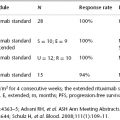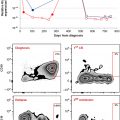Surgical Aspects of Upper Gastrointestinal Cancers
The University of Chicago Medicine, Chicago, IL, USA
• Are there important considerations when discussing perioperative nutritional support?
Dysphagia is a challenging problem for patients undergoing neoadjuvant therapy for locally advanced esophageal cancer. While enteral tube feeding is often used to address nutritional consequences of dysphagia, it does not address symptom control. Self-expanding metal or plastic stents have been used on occasion to bridge patients until surgical resection while receiving neoadjuvant therapy. Although stents may cause issues related to migration, there is support that they lead to improvements in dysphagia scores and maintenance of weight, and may not cause additional surgical complications or alteration of operations (Level 3). Importantly, response to chemoradiotherapy frequently leads to relief of dysphagia.
There is some controversy about performing an esophagectomy after percutaneous endoscopic gastrostomy (PEG) placement. A majority of surgeons use the stomach as an esophageal replacement during the reconstruction phase of esophagectomy and may have concerns about compromising the viability of the gastric conduit after takedown of a prior PEG. While there is retrospective evidence that PEG does not significantly compromise perioperative outcomes (Level 4), this should be discussed in advance with the surgeon, especially if they may be performing minimally invasive approaches. Laparoscopic jejunostomy tube placement may be a better option instead of blind percutaneous approaches in light of possible injury or proximity to the right gastroepiploic artery, the essential feeding vessel to the future gastric conduit.
During the postoperative period, feeding jejunostomy tubes are recommended as a method to intervene with existing malnutrition, possible complications, and a slow transition to oral intake by providing enteral support when needed (Level 3). While having a feeding jejunostomy tube placed in the setting of esophagectomy has potential value, routine postoperative enteral feeding after esophagectomy is not recommended based on current evidence (Level 2).
• What are the surgical options for esophagectomy? Are there important differences based on approach?
Esophagectomy is generally approached by either transthoracic or transhiatal means with reconstruction using mobilized stomach (occasionally the colon or jejunum) and the creation of an anastomosis in the chest or neck. Ivor Lewis esophagectomy entails a right thoracotomy and laparotomy with an intrathoracic anastomosis. A McKeown, or “three-hole,” approach involves right thoracotomy and laparotomy with a left cervical anastomosis. Transhiatal esophagectomy involves blunt dissection of the esophagus through an abdominal incision with a cervical anastomosis. Minimally invasive, robotic, and hybrid approaches use a combination of laparoscopy and/or thoracoscopy to perform esophagectomy by any of the above methods.
Data encompassing two meta-analyses, four randomized controlled trials, and a large population-based study demonstrate no significant differences in overall survival between the transthoracic and transhiatal approaches (Level 1). Cervical anastomoses are associated with a higher leak rate, but avoid the devastating complications often associated with leaks from intrathoracic anastomoses. Significantly greater ICU stay and surgical costs have been noted after transthoracic approaches, while transhiatal esophagectomy has been associated with lower postoperative mortality and less pulmonary complications. The largest reported series of transhiatal esophagectomies (n = 2007) described an in-hospital mortality of 1% and a 9% leak rate across the most recent 944 patients. However, recent experience with 1033 minimally invasive esophagectomies (MIEs) attributes a mortality rate of 1.7% and a 5% rate of anastomotic leak requiring surgery. While a randomized trial reporting short-term data from MIE has shown decreased pulmonary infections, similar leak rates, less vocal cord paralysis, improved pain scores, and improved quality-of-life parameters in comparison to open transthoracic esophagectomy (Level 2), significant advantages in length of stay and oncologic outcomes of MIE over open esophagectomy have not yet been demonstrated. There continues to be a lack of consensus on the ideal approach to esophagectomy.
• What is the impact of hospital volume on perioperative outcomes for esophagectomy?
In 1979, Luft and colleagues suggested that regionalization of complex surgical procedures should occur based on volume–outcome relationships. Birkmeyer and the Veterans Affairs Outcomes group later demonstrated that among surgical procedures performed on Medicare recipients, esophagectomy had the highest 30-day mortality rate and strongest-observed relationship with hospital volume, with a significant correlation between mortality and surgeon volume when adjusted for hospital volume. Recent trends have shown a decrease in risk-adjusted mortality associated with esophagectomy, which may reflect a redistribution of patients from low-volume to high-volume centers, but also better training and perioperative care. Some debate exists on an approach to further regionalization, as low-volume hospitals with certain systems characteristics have been demonstrated to have outcomes similar to those of high-volume hospitals. While procedure volume has become a quality measure adopted by the Leapfrog Group and the Agency for Healthcare Research and Quality, more recent analyses with large databases have suggested that patient characteristics may better predict mortality risk than hospital volume (Level 3).
• What is the role of endoscopic ultrasound (EUS) and PET–CT in primary staging and assessing response to therapy for esophageal cancer?







